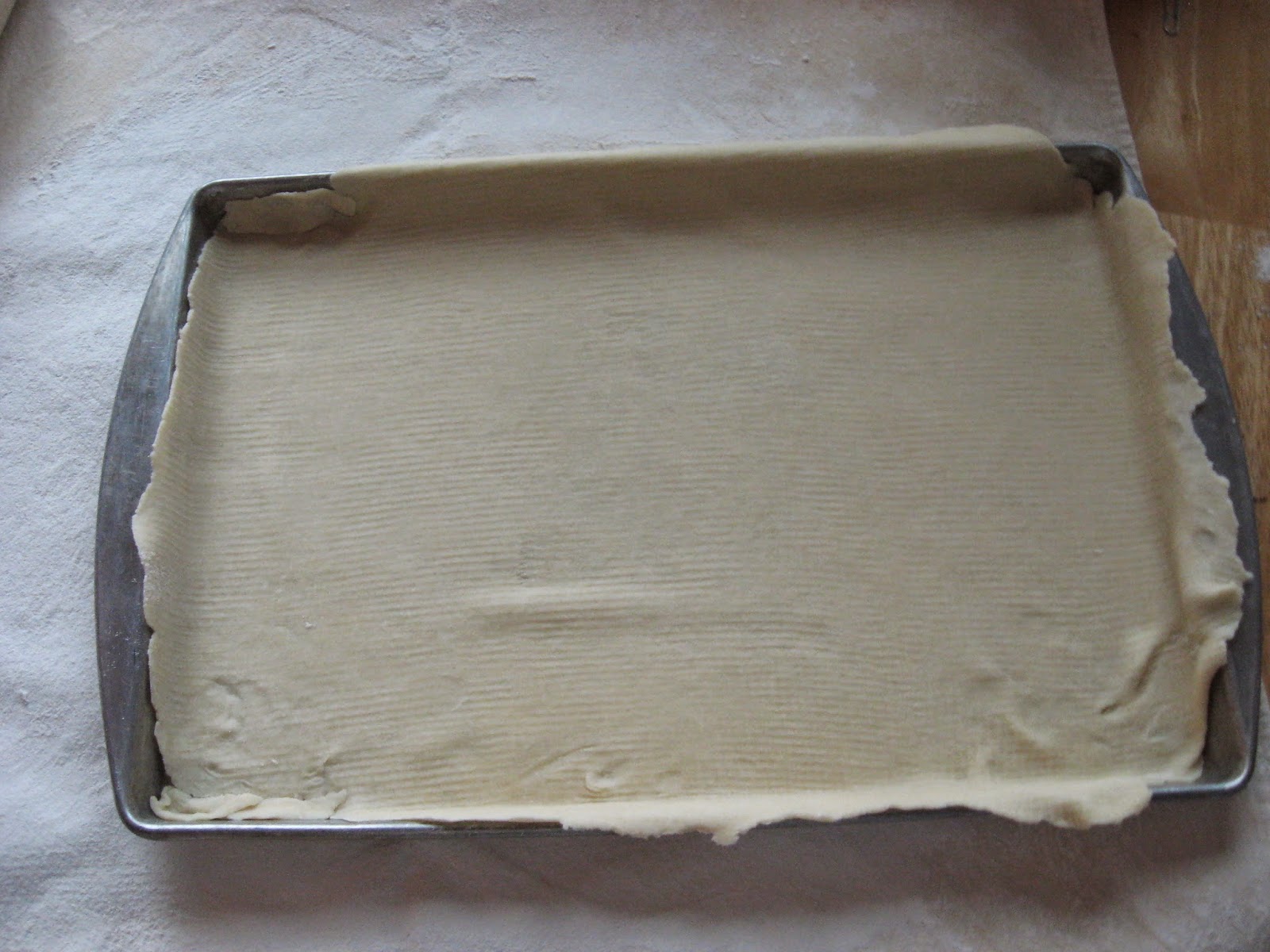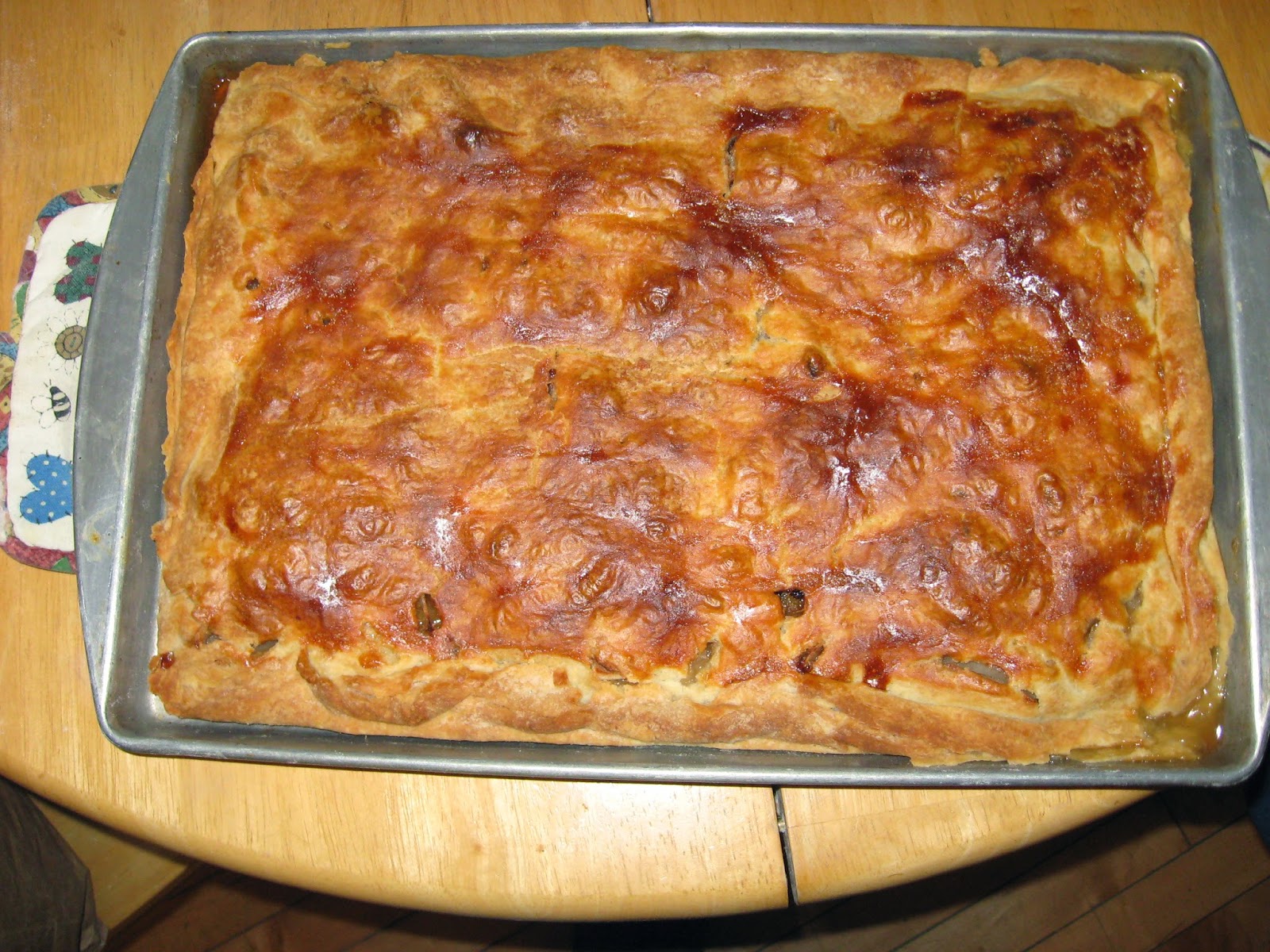I feel guilty about the number of recipes for sweets that I include here on the blog. Our cookstove is basically our sole means of cooking from October to May, and we cook and eat a lot more than just desserts and candy around here. The problem is that I'm very much a meat-and-potatoes kind of guy; in fact, I'm not sure that I would ever get tired of that combination for the main meal of every day.
All of the cooks in my family always planned their meals around the "meat, starch, vegetable, fruit, and glass of milk" pattern, and to this day my favorite meals are like that. The potatoes were usually mashed, sometimes baked or replaced with rice or noodles for infrequent variety. The meat was seasoned nicely, cooked well done--but not overly so. The vegetable was usually just boiled, occasionally buttered, and maybe lightly salted. Fruits were fresh, in Jello, or home-canned. That plan makes for balanced, economical eating (I bought a cookbook entitled something like
Flat Out Dirt Cheap Cooking and was surprised that the recipes fell into two categories: "familiar" or "more expensive than what I was used to"). The only problem with that kind of menu is that it makes for rather uninteresting blogging.
I notice, though, that the majority of the cookbooks that I have are as unbalanced as my blog. While proportionately I eat more nutritious foods than sweet foods, the vast majority of nearly every cookbook is spent on sweets of some variety. Thus ends my apology for sharing another unhealthy recipe.
I recently spent some time going over my
Kitchen Klatter Cookbook--the book I think of as the Southwest Iowa Kitchen Bible--looking for new ways to prepare round steak. We tried a couple of good steak recipes, but nothing worth sharing yet. Of course, I was distracted by the cookie section and marked a few recipes to try, and this one has been a real winner with us. It also has been given good reviews by my family and co-workers. Here is how they are made:
1. Brown one cup of butter over the fire. Set aside.
 |
| Butter melting over the fire in the Margin Gem. |
 |
The same butter browning nicely. I find that a larger pan works
best to brown large amounts of butter in. If the pan is smaller and
the melted butter deeper, the butter tends to boil for a while before
it finally decides to get brown. |
2. In a large mixing bowl, beat together two cups of brown sugar, two eggs, and a teaspoon of X-Tra-Touch maple flavoring. If you don't have X-tra-Touch maple flavoring, you can order some
here. If you are going to use a different brand of maple flavoring, you might want to start with a 1/2 teaspoon and adjust from there. For example, I use Mapleine for making homemade pancake syrup, and to quote my brother-in-law, "that stuff is high-octane."
 |
| The eggs, brown sugar, and maple flavoring ready to be beaten. |
 |
| The same combination as above after it was beaten. |
3. Pour the browned butter over the sugar, egg and flavoring mixture. Beat together. It surprises me how long it takes to incorporate the melted butter.
4. Stir in a 1 tsp. baking soda, a 1 tsp. cream of tartar. You can add a 1/4 tsp. salt if you want to, but I omit this and don't miss it.
5. Stir in one cup of finely chopped pecans.
6. Then add three cups of sifted flour.
If you let your butter cool a little before you mixed it in, you should have a pretty stiff dough now.
7. Shape the dough into a roll and wrap it in waxed paper. Chill the dough for at least twenty-four hours.
 |
| The roll of cookie dough ready to go into the refrigerator. |
8. When you are ready to bake the cookies, you need to build your fire so that you have a moderately hot oven. The recipe says to bake these at 375.
9. Slice thin (1/4 inch) cookies off the roll of dough, and place them on an ungreased cookie sheet. Leave plenty of space between the cookies because they expand quite a bit while baking.
10. The recipe says to bake these for ten minutes at 375. I say bake them however long you like. Truthfully, I'm kind of entertained by recipes that have an exact baking time on them. After having cooked with a wood cookstove for so long, I detect doneness by look, feel, and smell rather than minutes. The temperature in a modern oven varies widely too according to when the element or burner cycles on and off, so a range of minutes seems more realistic to me. Cookies like this that are sliced or rolled and cut can also need more or less baking time depending on how thick they are.
If you like a chewy cookie like Nancy and I do, take them out of the oven when they have completely risen and are just starting to brown around the edges. If you like a really crispy cookie, leave them in the oven until they are a uniform caramel color but have not yet fallen. Aunt Meme used to always tell me that you can tell that a cookie is sufficiently baked if you can remove it from the cookie sheet easily.
 |
These are done enough for Nancy and me. My mom would
say that they're not any good yet. |
11. Remove from cookie sheet to whatever you usually cool your cookies on. I like to use a layer of paper toweling on the enamel countertop of our vintage Sellers cupboard because that is what Meme taught me to do many years ago. Cooling cookies this way results in a chewier cookie than cooling them on a rack does.
 |
| The first sheet of finished cookies. |
A hint: The first time I baked these cookies, I didn't let the browned butter cool at all before I poured it over the egg and sugar mixture. Of course, you have to beat quickly then so that your butter doesn't cook your eggs. The dough was also quite warm then, and while it was easier to stir in the flour since the dough was so soft, I had a terrible time getting the dough shaped into a roll.
The second time I baked these, I had a phone call in the middle of the process, so the butter got a chance to cool quite a bit before I poured it on top of the sugar and egg mixture. I had to work a little harder to get the flour stirred in, but I think that the extra effort was worth it because I was able to make the neat, uniform roll that you see in the pictures here.
Here is the recipe the way that it appears on page 438 of the
Kitchen Klatter Cookbook:
Browned Butter-Pecan Cookies
1 cup butter, browned
2 cups brown sugar
2 beaten eggs
1 tsp. Kitchen-Klatter [X-tra-Touch] maple flavoring
1 cup finely chopped pecans
2 cups flour
1 tsp. baking soda
1 tsp. cream of tartar
1/4 tsp. salt
Melt butter and brown nicely. Pour over brown sugar, eggs and flavoring. Add pecans. Add dry ingredients which have been sifted. Form into rolls and chill for 24 hours. Slice thin and bake for 10 minutes in a 375-degree oven.
Trust me; these are delicious!


















.JPG)
































